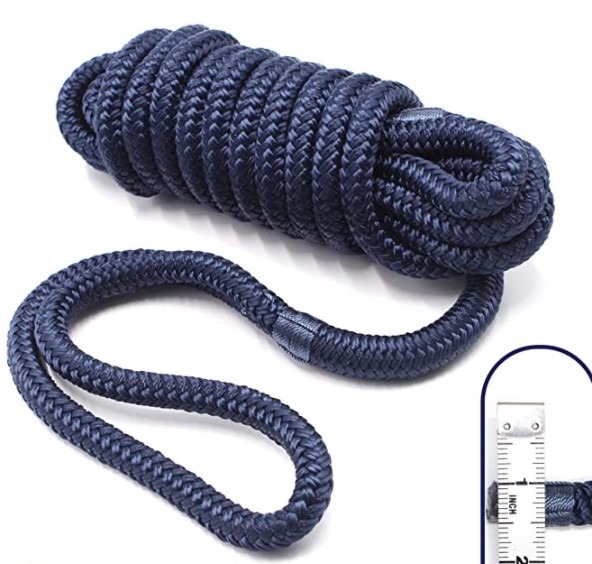The Ultimate Guide to Choosing the Right Rope for Your Needs how-to-choose-rope
how-to-choose-rope In this comprehensive guide, we’ll walk through how to choose the ideal rope based on your specific needs, covering everything from material types to application-specific tips.durable ropes


The Ultimate Guide to Choosing the Right Rope for Your Needs
When it comes to selecting the perfect rope, there’s no one-size-fits-all solution. Whether you’re a professional climber, a DIY enthusiast, or someone simply looking to secure their garden shed, the right rope can mean the difference between safety and failure. In this comprehensive guide, we’ll walk through how to choose the ideal rope based on your specific needs, covering everything from material types to application-specific tips.
1. Identify Your Use Case: Why Does It Matter?
Every activity demands unique rope properties. For example:
• Outdoor Adventures: Look for kernmantle ropes (e.g., best climbing ropes for beginners) that prioritize strength and durability.
• Home Use: Focus on nylon ropes (e.g., durable ropes for hanging plants) that resist UV damage and mildew.
• Industrial Settings: Prioritize fire-resistant ropes (e.g., industrial ropes wholesale) with high tensile strength.
Key Insight: Match your rope to its environment—this reduces waste and risks.
2. Material Matters: Understanding Rope Types
Rope materials determine performance, lifespan, and cost. Here’s a breakdown:
a. Nylon Rope
• Pros: Lightweight, flexible, and affordable (e.g., nylon rope for sale).
• Cons: Prone to UV degradation; avoid prolonged sun exposure.
• Best For: Camping, pet leashes, and indoor projects.
b. Polyester Rope
• Pros: Stronger than nylon, resistant to UV and chemicals (e.g., marine ropes for boats).
• Cons: Heavier and less flexible.
• Best For: Sailing, towing, and heavy-duty tasks.
c. Kernmantle Rope
• Pros: Core (kern) handles weight; sheath (mantle) enhances grip (e.g., best kernmantle ropes).
• Cons: Expensive.
• Best For: Rock climbing, rappelling, and rescue operations.
d. Fire-Resistant Ropes
• Pros: Certified for high-heat environments (e.g., fireproof ropes for construction).
• Cons: Limited flexibility.
• Best For: Firefighters, welding shops, and industrial facilities.
Pro Tip: Use the Ahrefs Keyword Explorer to research material-specific keywords like heat resistant ropes cost.
3. Key Metrics Every Buyer Should Consider
Before purchasing, ask these questions:
a. Tensile Strength
• Measured in pound-force (lbs) or kilonewtons (kN).
• Example: A 500-lbs rope can support up to 227 kg (e.g., heavy duty cargo ropes).
b. Diameter & Weight
• Thicker ropes offer more strength but are cumbersome.
• Thin ropes save space but may lack durability.
c. Length & Diameter Ratio
• Longer ropes require more storage; shorter ropes limit flexibility.
d. UV Resistance
• UV rays weaken most ropes over time—critical for outdoor use.
4. Budget-Friendly Buying Tips
• Compare Bulk Pricing: Buying in bulk saves money (e.g., discount ropes online).
• Check Reviews: Read customer feedback on platforms like Amazon for real-world performance.
• Leverage Sales: Shop during Black Friday or holiday promotions for deals on premium ropes (e.g., best ropes under $50).
5. Maintenance & Safety
Proper care extends your rope’s lifespan:
• Clean Regularly: Use mild soap and water to remove dirt/oil.
• Avoid Abrasion: Store ropes in a dry, cool place away from sharp objects.
• Inspect Routinely: Check for fraying or discoloration (signs of wear).
Safety Note: Replace ropes showing signs of damage immediately—failure can cause catastrophic accidents.
6. Common Scenarios & Recommendations
Scenario 1: Camping Trip
• Need: Durable, lightweight rope for tents and gear.
• Solution: A 50-foot nylon rope with UV protection (e.g., camping rope set).
Scenario 2: Gardening
• Need: Strong, weather-resistant rope for plant supports.
• Solution: A polyester garden rope rated for outdoor use.
Scenario 3: Industrial Warehouse
• Need: Fire-resistant, high-strength rope for pallets.
• Solution: A nylon-coated fire-rated
rope with a minimum breaking strength of 3,000 lbs.
Final Questions to Ask Yourself
1. What is my primary use case?
2. Does the rope need flexibility, strength, or resistance to elements?
3. Am I prioritizing budget or longevity?
By answering these questions and following our guide, you’ll confidently select a rope that meets your needs while maximizing value.


